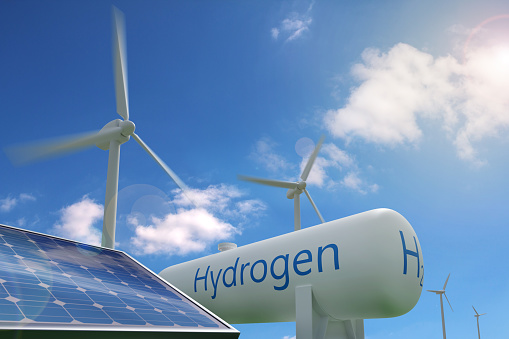Developing a Hydrogen Economy
The hydrogen economy can be envisioned as a greener, carbon-neutral alternative to oil and other fossil fuels. Today, hydrogen is used to refine oil, make methanol for plastics, and produce almost all of the world’s industrial ammonia, which is the main ingredient in artificial fertilisers. Without ammonia, crop yields would plummet and hundreds of millions of people would face starvation.
Developing a low-carbon hydrogen economy
Developing a hydrogen economy requires addressing several challenges. For one thing, it requires a centralized, reliable supply chain. While there are many different ways to achieve this goal, a central hub can serve as a financial, logistical, and regulatory focal point. It can also engage state policymakers. Developing a hydrogen economy is a challenge that has both domestic and international applications. Fortunately, there are a number of solutions that are well within the reach of all regions of the world.
In addition, a hydrogen economy will require a large, reliable supply of renewable power. Once these supplies are available, the global supply chain will undergo a major transformation. Already, some players are establishing strategic alliances and competitive positions in the hydrogen value chain. Developing a hydrogen economy is an important step towards net-zero energy.
Hydrogen can also be used to produce fertilizer. Iceland has successfully turned surplus electricity into ammonia for fertilizer. However, 90% of the cost of ammonia comes from the energy used to produce the fertilizer. Developing a hydrogen economy is a complex process that will require new technologies to transport the hydrogen from one place to another.
Low-carbon hydrogen can be produced from natural gas, carbon capture technologies, and electrolysis powered by renewable power. The availability of these resources will depend on local conditions and innovation in production and transportation. The price of natural gas and renewable power will also determine how affordable hydrogen is to produce. This will require government action.
A number of countries are actively pursuing the development of mass production of green hydrogen. Countries with abundant hydroelectricity and geothermal energy are positioned to serve as the Saudi Arabia of hydrogen. Morocco is developing solar power in the Sahara desert and plans to produce hydrogen as well. These are all important steps toward a low-carbon hydrogen economy.
Nuclear energy can also be used to produce hydrogen. However, nuclear energy presents significant challenges, including high costs in many locations. However, a modern nuclear power plant can be combined with a solid-oxide electrolyzer. Small modular reactor systems allow for the production of H2 nearer to the place where it is needed.
The main participants in the innovation system include the government administration, State-owned companies, and State-funded supporting organisations. The hydrogen economy must be based on top-down policy initiation and implementation, ensuring better synergy between measures. In addition, it requires capital accumulation.
Hydrogen is a clean-burning fuel that is an ideal fuel for fuel cell technology. Hydrogen is also a useful electrolyte for fuel cell technology. It has up to three times more energy than other fuels. Hydrogen can also be blended with natural gas. A number of ongoing projects in the United States seek to burn both hydrogen and natural gas in power plants, while others aim to run exclusively on hydrogen.
Canada has a number of advantages when it comes to developing a low-carbon hydrogen economy. The country’s natural resources, technological expertise, and talented workforce make it a prime location for hydrogen production. Hydrogen in Canada can be produced at low cost, enabling it to reach potential markets around the world. Hydrogen can be produced from natural gas and the carbon emissions from the production process can be safely stored in Canada’s carbon capture and storage technologies.
Sources of green hydrogen
The hydrogen economy will need sources of green hydrogen. The vast majority of hydrogen is grey, made from fossil fuels and emitting CO2. Green hydrogen comes from natural gas, which is decarbonized and captures carbon emissions. Moreover, green hydrogen is produced through electrolysis of water powered by renewable sources.
As a supplementary energy source, hydrogen is a viable alternative to fossil fuels. Its benefits over renewable energy resources make it attractive for aviation and heavy industry. Its versatility makes it a desirable option for niches where decarbonising is a difficult challenge. For instance, hydrogen can be stored in compressed tanks, making it easier to transport than lithium-ion batteries. Moreover, the hydrogen economy can be used in sectors where other energy resources cannot compete. The European Union has recently launched projects called Hycarus and Cryoplane to use hydrogen in passenger aircraft.
Green hydrogen is a versatile fuel that has many applications in the hydrogen economy. Besides fuel cell technology, it can be added to natural gas and burned in thermal power plants and district heating systems. It can also be used to fuel vehicles and ships powered by fuel cells. Its potential is enormous, and it is expected to play an important role in fighting climate change.
In order to meet the goals of the Paris Agreement, green hydrogen is crucial. Unlike conventional fossil fuels, green hydrogen does not generate harmful emissions and is a carbon-free energy carrier. It also helps decarbonize other sectors. In fact, Europe aims to become carbon neutral by 2050. Moreover, green hydrogen can also be used in industry to replace fossil fuels. The European Union has already launched a first-ever hydrogen strategy, which aims to support the integration of sectors in Europe.
To create an ecosystem that facilitates green hydrogen production, governments must first develop a policy framework that incentivizes investments. This includes establishing regulations and providing technical assistance. Furthermore, it is important to develop a global definition of green hydrogen and a system for certifying its authenticity. Finally, workers need to be trained for the hydrogen industry.
As the hydrogen economy grows, the hydrogen industry needs to produce and use green hydrogen. In order to meet the needs of the hydrogen industry, the world will need approximately 500 million tons of green hydrogen. Hydrogen can be produced in many ways and is useful in many fields, including oil refining, ammonia production, steel manufacturing, chemical and fertilizer production, food processing, and metallurgy.
The demand for green hydrogen is increasing worldwide. It has significant potential to help the world meet its energy needs, while contributing to global climate action goals. In 2020, the global demand for hydrogen will reach 87 million metric tons, and this is forecast to increase to 500-680 million metric tons by 2050. This means that green hydrogen will be a crucial component in nearly every sector that relies on fossil fuels.
Options for storage of hydrogen
Hydrogen can be stored in a number of ways. It can be stored in pressurized tanks, solid metal hydrides, nanotubes, and geological reservoirs. However, storing large amounts of hydrogen requires cryogenic temperatures to prevent evaporation and deterioration of fuel. Liquid hydrogen is costly to store and maintain because about 33% of the energy is lost in the process. The most practical use for liquefied hydrogen is for long-distance transportation.
Cryogenic tanks are generally large, which minimizes the amount of insulation mass. A sphere, in particular, has the highest volume-to-surface ratio, limiting heat transfer and the boil-off effect. An ideal spherical tank with 25 mm insulation would have a gravity-based energy density of 6.4 MJ/L, or 7.5 wt%. This energy density is comparable to that of a kilogram of compressed hydrogen.
While the current state of hydrogen storage technologies is relatively advanced, there are still many problems. Inefficient storage methods and a limited number of technologies are hampering progress towards a hydrogen economy. It is essential to understand the problems involved with storage and to develop viable solutions. Although there is no one perfect solution, there are several alternatives that are promising.
Hydrogen is an important renewable energy source that is gaining interest. It has the potential to help decarbonize the energy industry. It can be blended into existing natural gas networks. Alternatively, it can be used to boost power system flexibility. Its combined use with ammonia can reduce emissions in coal-fired power plants.
Hydrogen is relatively cheap. Hydrogen prices could reach 8 $/kg, which is less than 0.24 $/kWh, making it cheaper than electricity in many developed countries. If this were to happen, hydrogen could be a viable alternative fuel for transportation. It is also safer than gasoline and diesel fuels.
Developing hydrogen technologies requires international cooperation. By coordinating efforts across countries, government and industry can scale up production. This will lower costs and enable shared best practices. Furthermore, it will facilitate trade between countries. Common international standards will also help trace the environmental impact of hydrogen supplies. Further, hydrogen will be a great way to boost economies across the globe.
There are different methods for storing hydrogen. The most widely used method is a hydrogen storage vessel. Hydrogen fuel cells can be used to store renewable energy as an alternative to fossil fuels. Another approach is to utilize the energy of the seas to store renewable energy. Hydrogen can also be used for electricity. A large-scale hydrogen tank can be used to store electricity that is not easily generated by renewable energy sources.



